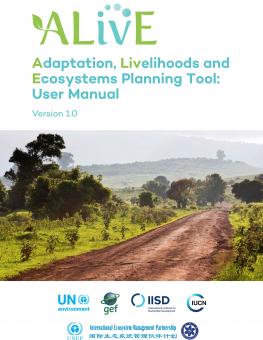
ALivE Adaptation, Livelihoods and Ecosystem Planning Tool: User Manual
The ALivE user manual provides detailed guidance on applying the computer-based ALivE tool designed to support the planning of effective and feasible ecosystem-based adaptation options.
ALivE is a computer-based tool designed to help its users organize and analyze information to plan effective ecosystem-based adaptation (EbA) options within a broader EbA planning process.
ALivE stands for Adaptation, Livelihoods and Ecosystems. The ALivE user manual provides detailed guidance on applying the ALivE tool, including step-by-step instructions for using the tool itself. The manual also contains a framework and methodologies for collecting and organizing the information required to use ALivE, as well as guidance on identifying entry points for integrating EbA into policies and planning processes.
You might also be interested in
What’s Next After UNEA-6: Why “synergies” is more than a buzzword
In an era marked by escalating environmental challenges and geopolitical tension, the Sixth United Nations Environment Assembly (UNEA-6) called for more cooperation to tackle the triple planetary crisis.
UNFCCC Submissions Tracker
Tracking and sharing opportunities for stakeholders to give input to the UN climate change negotiations.
The State of Global Environmental Governance 2023
In global environmental talks in 2023, the focus across nearly all issue areas was funding implementation and reviewing performance.
What Is the UAE Framework for Global Climate Resilience, and How Can Countries Move It Forward?
With the introduction of the new framework for the Global Goal on Adaptation (GGA), COP 28 marked a milestone for adaptation. We unpack key outputs and set out how countries can move forward by strengthening their national monitoring, evaluation, and learning (MEL) systems.